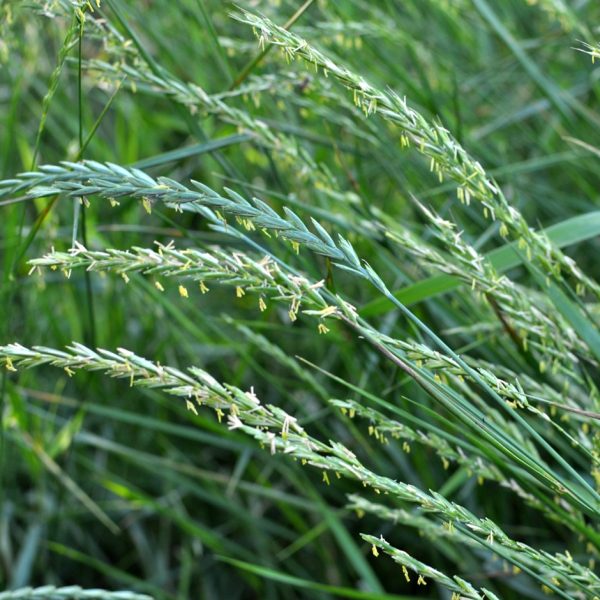Regenerative agriculture is the new buzz-word in sustainability circles and beyond – including amongst herbalist and other health practitioners – but what’s it all about?

There’s a growing enthusiasm and interest in the concept of regenerative agriculture, but also a lot of confusion. Enthusiasm, because what’s not to love about a way of working with the land that claims to lock carbon in the soil, and work with people and planet in mind? Confusion because ‘regenerative’ is subject to wide-ranging interpretations. It’s a term that could equally mean tokenistic changes and business as usual, which leads to nothing more than ‘greenwashing’. Or it can mean a wholesale shift in farming practices that will result in restored ecosystems and sustainable livelihoods.
For those of us within the organic movement, it’s equally a moment of celebration and trepidation.
Celebration, because the word regenerative is reaching new ears, and if taken seriously and executed properly, it could result in the very same principles and practices that underpin the organic movement, being brought to life. If regenerative helps move our food system in a positive direction for climate and nature, then that’s clearly an excellent result. To that point, there is also trepidation, because if regenerative fails to live up to its most ambitious and progressive claims, it risks distracting the world from the real solutions at a moment in history when we have no time to waste.
At the true heart of both the organic movement and the regenerative movement, we see a similar set of principles, striving for a food system which benefits the world around us. Those who are serious about ‘regenerative’ living up to its true promise tend to be aligned with the organic movement and are often some of organic’s greatest supporters.
The term ‘regenerative’ was first coined in the US by an organic pioneer – Robert Rodale. Regeneration International was set up by Andre Leu – the former president of IFOAM Organics International, which is the umbrella organisation for the worldwide organic movement. Some of the newly emerging academic studies of regenerative farming are being carried out on farms that are already certified organic and being farmed by organic farmers who have a passion for innovation and experimentation. If you read the definition of organic agriculture, it’s so closely aligned with the best of regenerative that they’re virtually synonymous:
“Organic Agriculture is a production system that sustains the health of soils, ecosystems, and people. It relies on ecological processes, biodiversity and cycles adapted to local conditions, rather than the use of inputs with adverse effects. Organic Agriculture combines tradition, innovation, and science to benefit the shared environment and promote fair relationships and good quality of life for all involved.”
If they have so much in common, what’s the difference?

Broadly, this might simply be about optics. For a non-organic farmer who believes in the principles of regenerative, they might see organic standards and regulations as restrictive and prohibitive. For those within the organic movement these same standards and regulations are seen as a floor not a ceiling, and a useful tool to help differentiate themselves in the market and protect against ‘greenwash’. But even at the entry level, organic takes a systems-based approach that works within natural cycles – farmers have got to be able to do this in order to keep their organic certification for the long term.
For example, organic farmers must find natural ways to build soil fertility and manage pests and diseases because they’re not allowed to fall back on short-cuts such as artificial fertilisers or routine use of antibiotics to maintain soil and animal health respectively. The standards are a baseline (albeit a high one) – they ensure that there is a consistency to what someone can expect as a minimum when they see something is certified organic. In reality, many organic farms and businesses will naturally go above and beyond these baseline standards.
For a farm starting from scratch, going organic can be hard and can take years. Regenerative offers an opportunity for farmers to work to organic principles straight away. Perhaps the steady adoption of regenerative practices might act as a gateway to an organic whole-system approach. The logical next step might be to gain organic certification to benefit from the market opportunity and established consumer trust.
What’s the role of standards in matching principles with practice?

When organic standards and regulations don’t fully reflect organic principles, there’s always room for improvement. Nowhere is this more evident than in the United States where their National Organic Program has deviated so much from the vision of the organic movement that it’s led to a splintering of the movement there. It’s also one of the reasons that regenerative has emerged out of the US context because organic regulation stopped going far enough.
Fortunately for European consumers, the rules are much stronger here. At the Soil Association we work tirelessly behind the scenes to help those writing the rules to keep the laws that govern the marketing of organic products as close to the organic principles as possible. But sometimes, legal and political compromises mean that organic rules don’t go as far as they should – as we see in the States. This is one of the key reasons the Soil Association has always had our own higher standards that go above and beyond the law. Everyone certified to the SA standards not only has to meet the baseline law, but they also must meet additional requirements in important areas like animal welfare and packaging. If the law gets weakened, our Standards can ensure that not only consumer expectations are consistently safeguarded, but that important issues are being addressed and positive impacts are continuing. They’re an important backstop that helps ensure the organic market is generally led by the movement, not the other way around.
The same is true for some other independently set standards – like Fairwild. The FairWild Standard is designed to ensure the sustainable collection of wild plants and the protection of those who collect and trade them. The standard protects plant species and local wildlife from the effects of over-harvesting, and makes sure local collectors enjoy fair working conditions.
Regenerative schemes and initiatives
Regenerative schemes and initiatives can play a pivotal role in making the shifts that we need to see in our food and farming systems.
There are several ‘regenerative’ standards emerging. We’re poised to see if these developing standards offer anything new to organic farming which might then inspire standards and laws to be progressed further, including our own. A key trait of the organic movement is continual research, innovation, and development. Those practising regenerative farming can add to this aspiration to improve the food systems as a whole.
Creating trust with consumers
Consumers want products which come from systems that are tackling climate change, boosting biodiversity, and nurturing soil health. How can both regenerative and organic farmers build trust with an informed and sceptical modern-day consumer?
It’s often argued that the term regenerative should just become regulated so it can be traded on the market. One might argue that truly regenerative systems already have a market mechanism to support them – through organic certification.
The organic farming movement
There is a culture of innovation and continuous improvement in both regenerative and organic. Can combining efforts be a win-win for everyone at a global scale?

Organic is often wrongly type-cast as simply a label on the shop shelf. But the success of the organic market is underpinned by a whole movement – one that is continually innovating and developing all over the world.
There’s an international society of organic farming research (ISOFAR) that facilitates global co-operation in research, education and knowledge exchange. There’s also INOFO – the Inter-continental Network of Organic Farming Organisations that links around 2.5 million farming families around the world to discuss practices and challenges and celebrate successes. It represents the rich diversity of the grassroots organic movement and puts the voice of the farmer at the centre. Both organisations, and around 700 others are part of the IFOAM family – International Federation of Organic Agriculture Movements – a unique umbrella organisation that brings together all those with an interest in organic, and which demonstrates the organic principles of health, ecology, fairness and care in action.
Whilst there’s a lot to like about the attention that regenerative agriculture is putting on the need to transform our food and farming systems, we shouldn’t be naïve to the way the regenerative word is being co-opted by some. Ultimately, we need wholesale systems change to address the challenges of our times, and the organic movement offers a beacon of hope and real-life examples of how this can be done already.
On a practical level today, if policymakers, businesses, citizens and consumers want to show their support for the best of regenerative agriculture, I would confidently say that the easiest way to do so is by supporting organic.
































